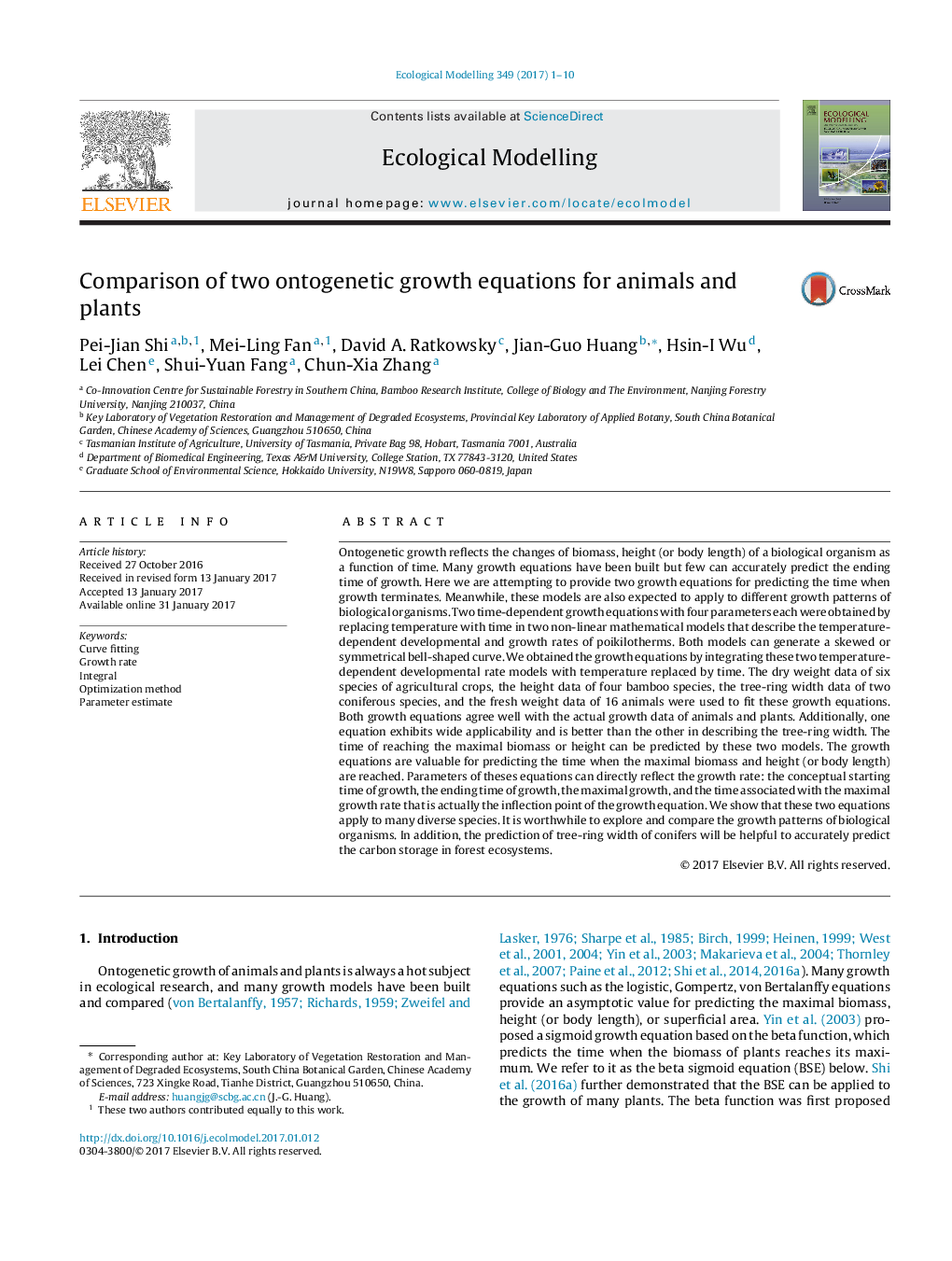| Article ID | Journal | Published Year | Pages | File Type |
|---|---|---|---|---|
| 5742286 | Ecological Modelling | 2017 | 10 Pages |
â¢Two general growth equations were compared using a large number of data sets.â¢Animals and plants both exhibit an asymmetrical instantaneous growth tendency.â¢Growth rate curve of plants is right-skewed, but that of animals is left-skewed.
Ontogenetic growth reflects the changes of biomass, height (or body length) of a biological organism as a function of time. Many growth equations have been built but few can accurately predict the ending time of growth. Here we are attempting to provide two growth equations for predicting the time when growth terminates. Meanwhile, these models are also expected to apply to different growth patterns of biological organisms. Two time-dependent growth equations with four parameters each were obtained by replacing temperature with time in two non-linear mathematical models that describe the temperature-dependent developmental and growth rates of poikilotherms. Both models can generate a skewed or symmetrical bell-shaped curve. We obtained the growth equations by integrating these two temperature-dependent developmental rate models with temperature replaced by time. The dry weight data of six species of agricultural crops, the height data of four bamboo species, the tree-ring width data of two coniferous species, and the fresh weight data of 16 animals were used to fit these growth equations. Both growth equations agree well with the actual growth data of animals and plants. Additionally, one equation exhibits wide applicability and is better than the other in describing the tree-ring width. The time of reaching the maximal biomass or height can be predicted by these two models. The growth equations are valuable for predicting the time when the maximal biomass and height (or body length) are reached. Parameters of theses equations can directly reflect the growth rate: the conceptual starting time of growth, the ending time of growth, the maximal growth, and the time associated with the maximal growth rate that is actually the inflection point of the growth equation. We show that these two equations apply to many diverse species. It is worthwhile to explore and compare the growth patterns of biological organisms. In addition, the prediction of tree-ring width of conifers will be helpful to accurately predict the carbon storage in forest ecosystems.
Graphical abstractDownload high-res image (87KB)Download full-size image
